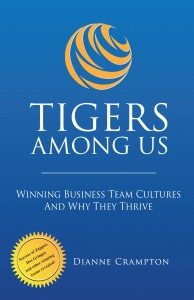 Internal competition works for some employees. The notion of being better than someone else results in many different outcomes.
Internal competition works for some employees. The notion of being better than someone else results in many different outcomes.
One internal competition outcome is to take another employee’s good ideas and make them your own. Or, consider the situation where a talented person is set up to fail.
The concept of “I win and you lose” is the driving force in some workplace cultures. Highly competitive employees tend to thrive in these dog-eat-dog cultures. The problem is that this type of employee is toxic to teams and toxic to collaborative problem-solving that results in long-term company gains. Now it is also known that they are toxic for employee retention.
Study looks at internal competition impacts on employee retention.
Monster, a worldwide leader in successfully connecting job opportunities to people, asked visitors to their site the question, “Have you ever considered leaving (or left) your job because of a workplace rival?” The query received over 3,300 responses. International findings included:
- 20% of respondents answered “I have left a job because of a workplace rival”
- 26% of respondents answered “I have considered leaving a job because of a workplace rival”
- 54% of respondents answered “I’ve never left or considered leaving a job because of a workplace rival”
Breaking down internal competition by countries.
Breaking down the numbers by region, German respondents have been the most negatively affected by workplace rivalries: 27% have left a job due to one, and 30% have considered doing so –the highest response rate for both options. Despite Germany’s elevated figures, EU respondents are otherwise the least bothered by workplace rivalries: only 18% have left a job due to one (the lowest response rate, internationally) and 57% have never left nor considered leaving a job due to a workplace rival (the highest response rate, internationally).
Internal competition impacts in the United States.
A separate survey on US Workplace Rivalry found that only 3% of respondents consider workplace rivalries to be wholly positive, while 47% consider them wholly negative and 50% believe they are both positive and negative. Other key findings of the survey include:
- 73% of respondents have a workplace rival
- 40% of respondents rated their workplaces as having the highest levels of rivalry (being highly competitive work environments)
- Causes of workplace rivalry included: Co-Workers (49%); Boss/ Supervisor (44%); and Senior Management (31%)
- Workplace rivalry reduced job performance for majority of workers – 55% claim it created undue stress/ reduced productivity; 20% claimed very negative impacts including getting into trouble with management and job loss. Only 6% claimed it inspired them to do some of their best work
- Popular methods of handling workplace competition include: working hard and focusing on your goals (53%), communicating with your manager (37%), and learning new skills to outshine your competition (33%)
What does Monster say about internal competition?
According to Mary Ellen Slayter, career advice expert for monster, “Competition doesn’t have to be detrimental to a workplace; in fact, it can often be quite beneficial”.
Slater says, “Your company works hard to hire the best talent available, and rivalries are bound to occur when similarly skilled and motivated individuals work together. Balance is key. Let workplace competition motivate you to perform your best, but don’t get distracted by jealousy. Counter competitive tensions by finding common ground through sports, shared hobbies, or just having a drink after hours. If you can’t get the tension under control, find ways to distance yourself from your adversary. Explore your options- from switching desks, to switching companies (quit?) – and remember that living (and working) well is the best revenge.”
Is there an alternative to internal competition?
 We could not disagree more with Mary Ellen Slater. When 49% of employees claim that workplace rivalry comes from other employees this creates a cover-your-back workplace culture where sharing ideas and helping one another comes to an abrupt halt. When 75% say rivalry comes from managers and leaders, you have a culture entrenched in trust, interdependence, genuineness, empathy, risk resolution and success behavior problems (TIGERS 6 Principles) where passive aggressive or openly aggressive conflict trumps productivity every time.
We could not disagree more with Mary Ellen Slater. When 49% of employees claim that workplace rivalry comes from other employees this creates a cover-your-back workplace culture where sharing ideas and helping one another comes to an abrupt halt. When 75% say rivalry comes from managers and leaders, you have a culture entrenched in trust, interdependence, genuineness, empathy, risk resolution and success behavior problems (TIGERS 6 Principles) where passive aggressive or openly aggressive conflict trumps productivity every time.
The good news is that The TIGERS 6 Principles are measurable and correctable within work culture and department behavior. When it is caused from the top, leadership coaching is indicated and the success of leadership behavior change is also trackable from both return on investment and productivity measures.
The bottom line on internal competition.
Bottom line, internal competition lowers company productivity and morale. Both indicators require management and leadership to correct them.
Instead of supporting internal workplace competition and the notion that this motivates people to perform their best, consider making market share or new innovations the target. This can be accomplished by monitoring behavior and simple initiatives that result in cost savings or productivity improvements to start.
Slater recommends finding common ground through sports, shared hobbies, or just having a drink after hours. Granted, these activities build teams. However, without an external or internal cost savings or productivity improvement target, these activities provide ripe opportunities for more ideas being “stolen” and the conundrum of why 25 – 49% of the workforce doesn’t show up for them.
 Monster’s study confirmed the negative impact produced by internal competition in the workplace. However, there are solutions.
Monster’s study confirmed the negative impact produced by internal competition in the workplace. However, there are solutions.
In our book, TIGERS Among Us – Winning Business Team Cultures and Why They Thrive, we cover four examples from highly successful companies showing you how their leaders produce high levels of productivity and employee satisfaction through minimized internal competition. These four companies demonstrate both small company and large company behavior and leadership examples. The book is 163 pages and is appropriate reading for all levels of operation.
Copyright, TIGERS Success Series, Inc. by Dianne Crampton
About TIGERS Success Series Group Norm Facilitator Training
 TIGERS Success Series provides a Manager Facilitator training with a tool box that engages employees to identify the group norms that improve both department and company work culture behavior. It helps organizations to re-engage employees, resolve conflict behavior and builds work relationships. These same resources and tool box can be used to onboard new employees and contractors onto existing teams so behavior is understood and normalized from the get-go. The training and tool box are brought to you when eight or more of your managers and employees are enrolled.
TIGERS Success Series provides a Manager Facilitator training with a tool box that engages employees to identify the group norms that improve both department and company work culture behavior. It helps organizations to re-engage employees, resolve conflict behavior and builds work relationships. These same resources and tool box can be used to onboard new employees and contractors onto existing teams so behavior is understood and normalized from the get-go. The training and tool box are brought to you when eight or more of your managers and employees are enrolled.